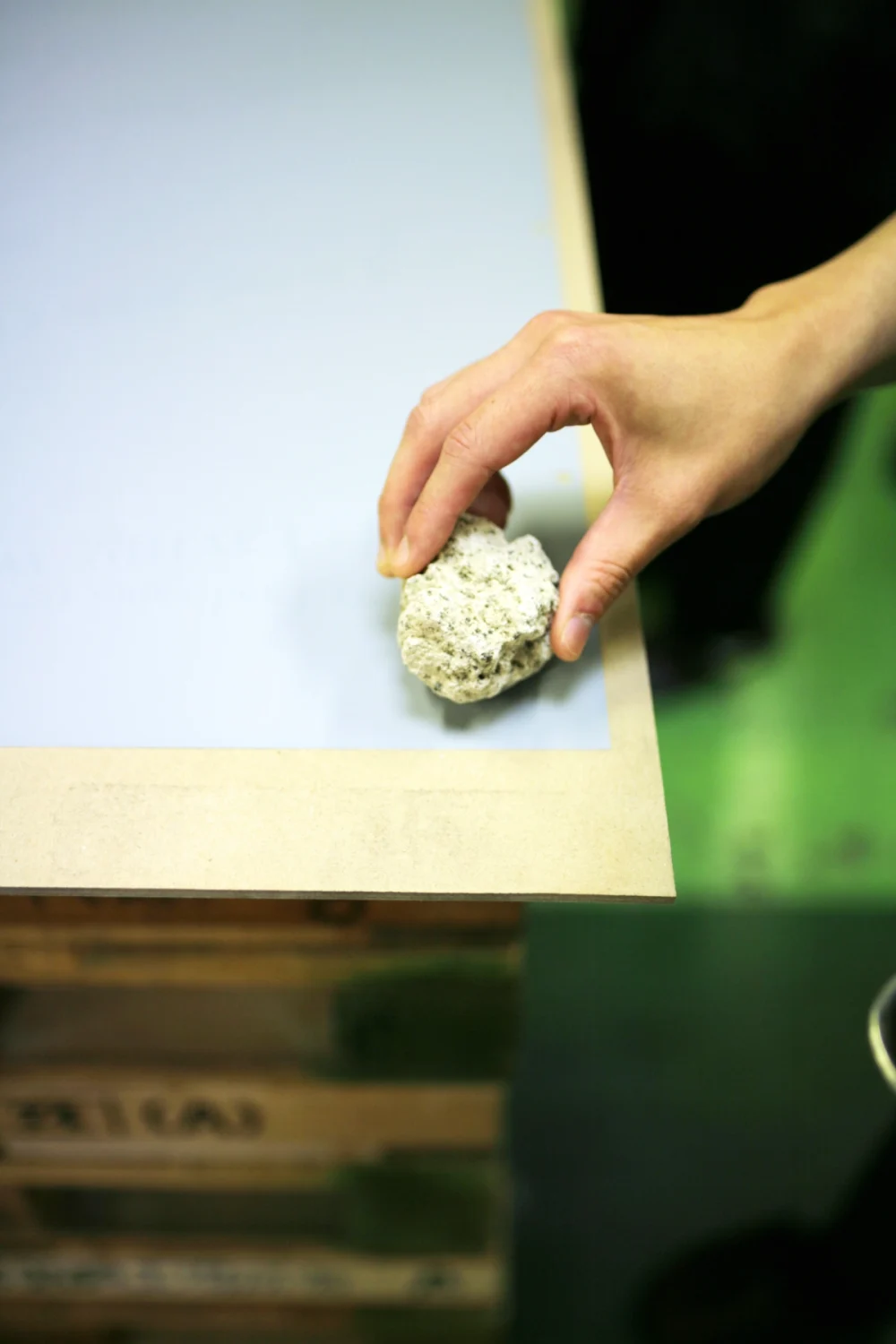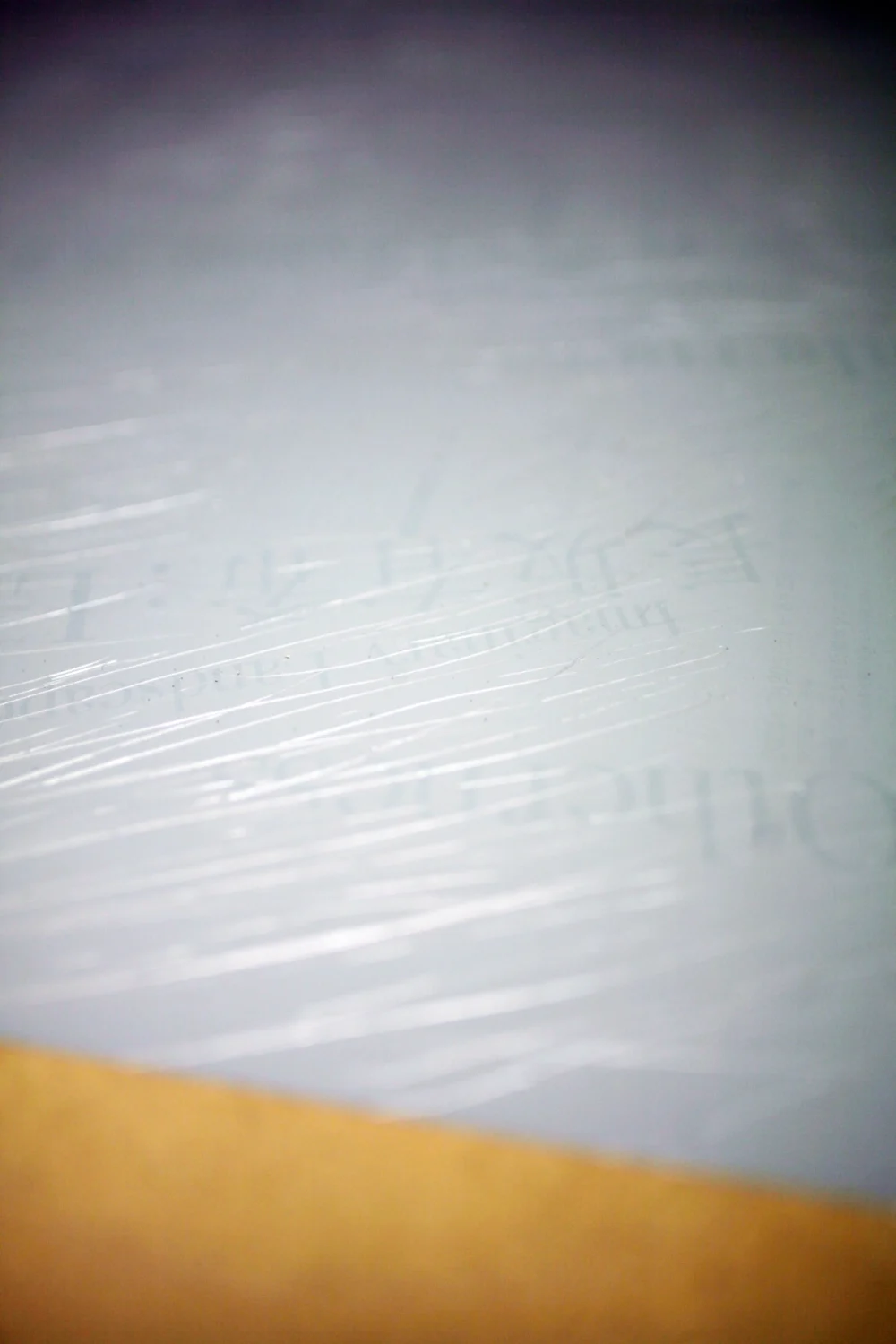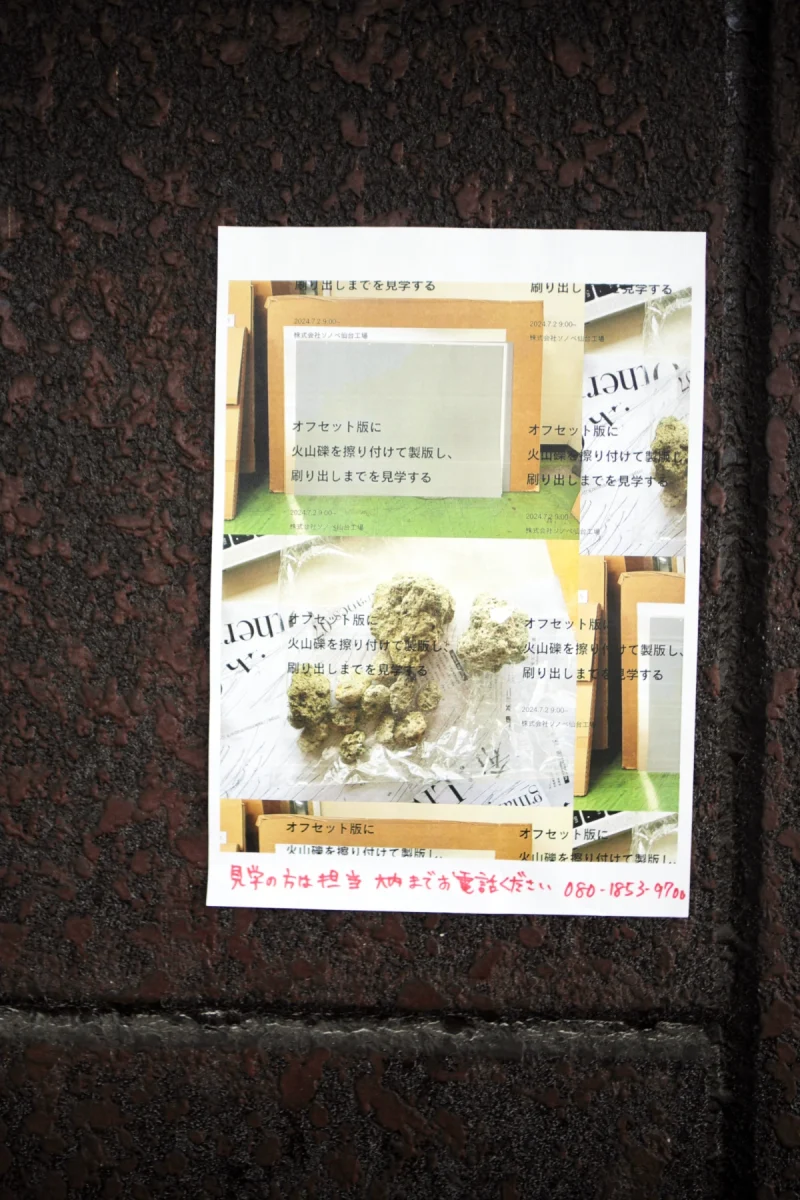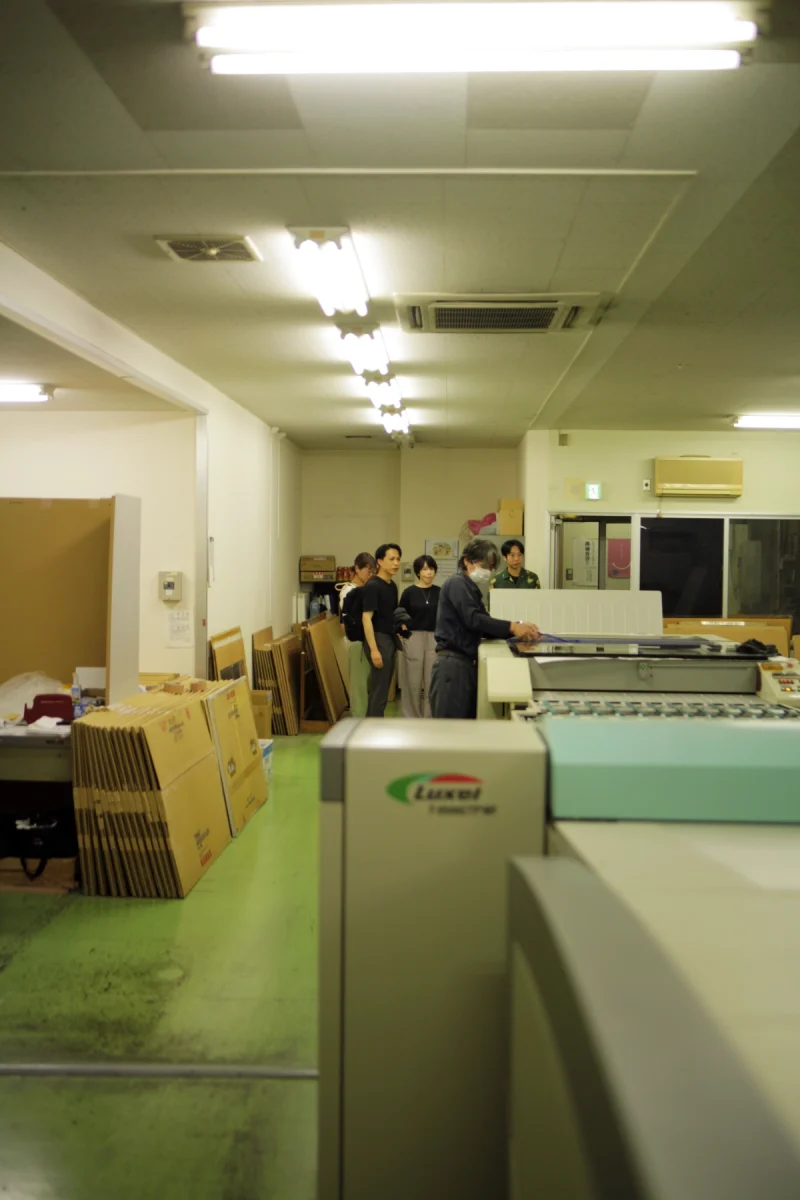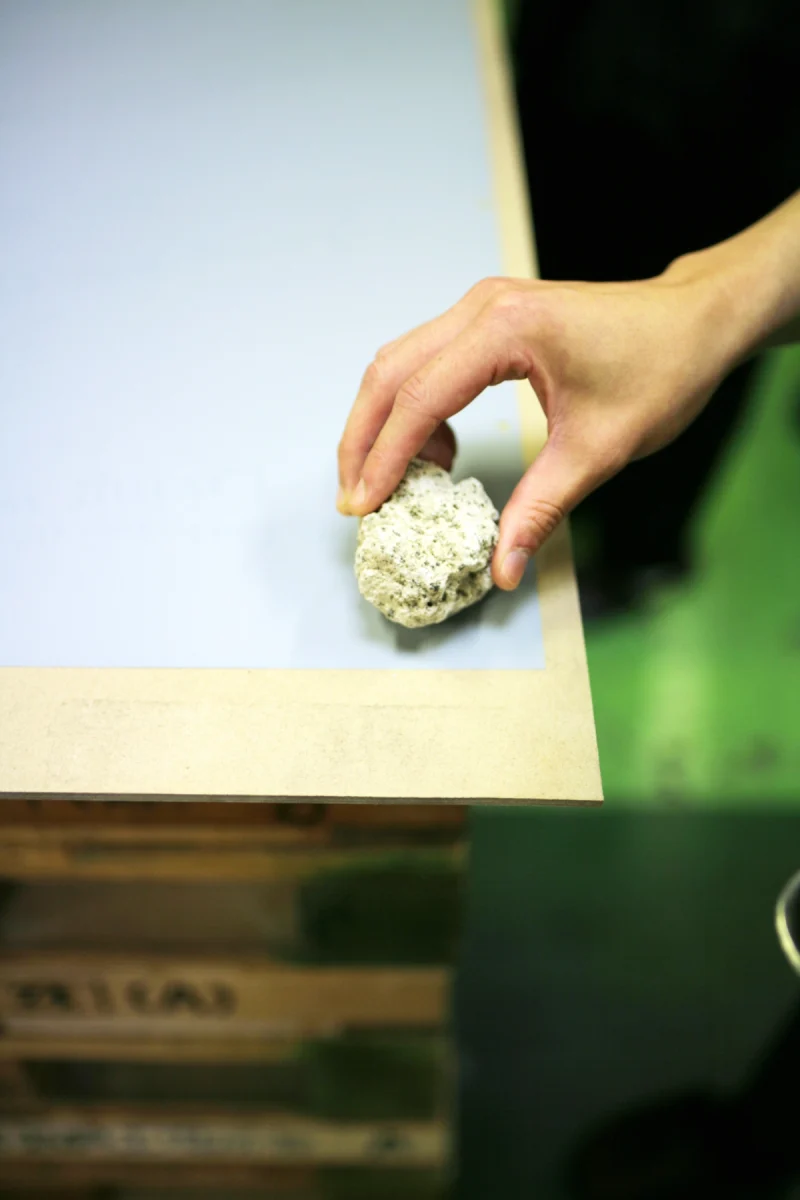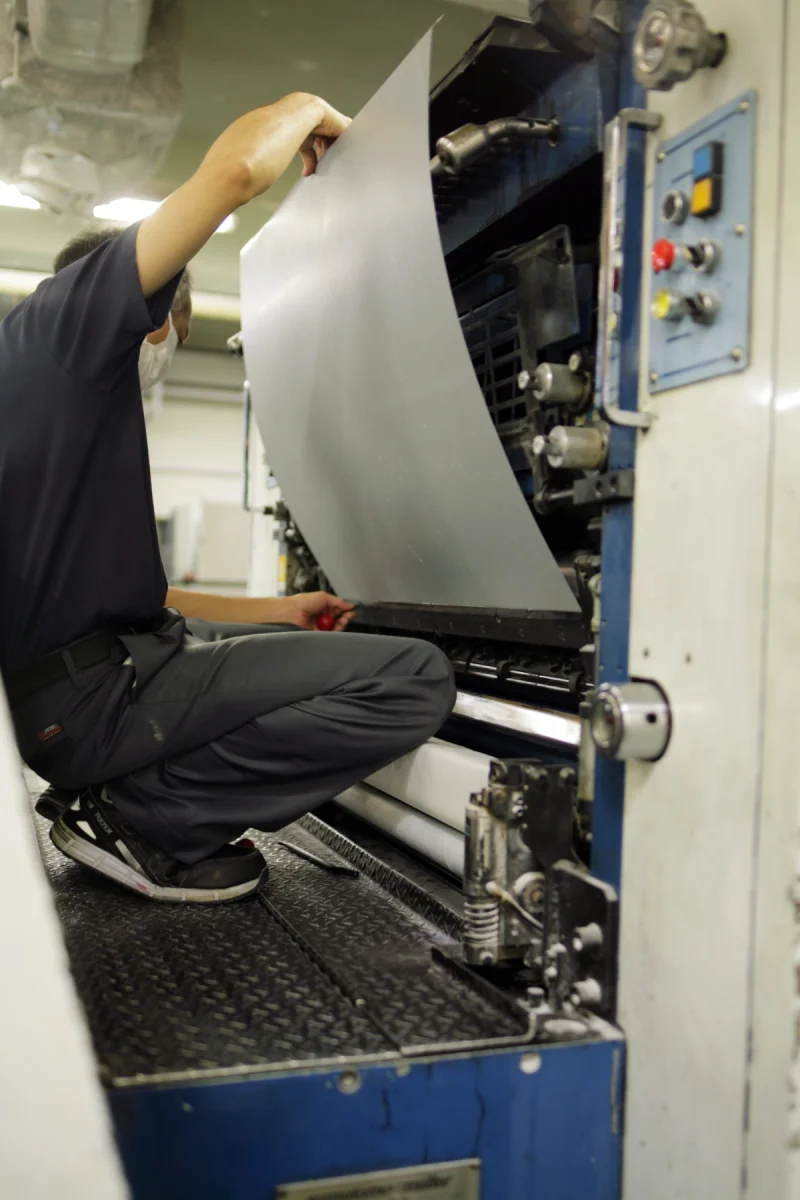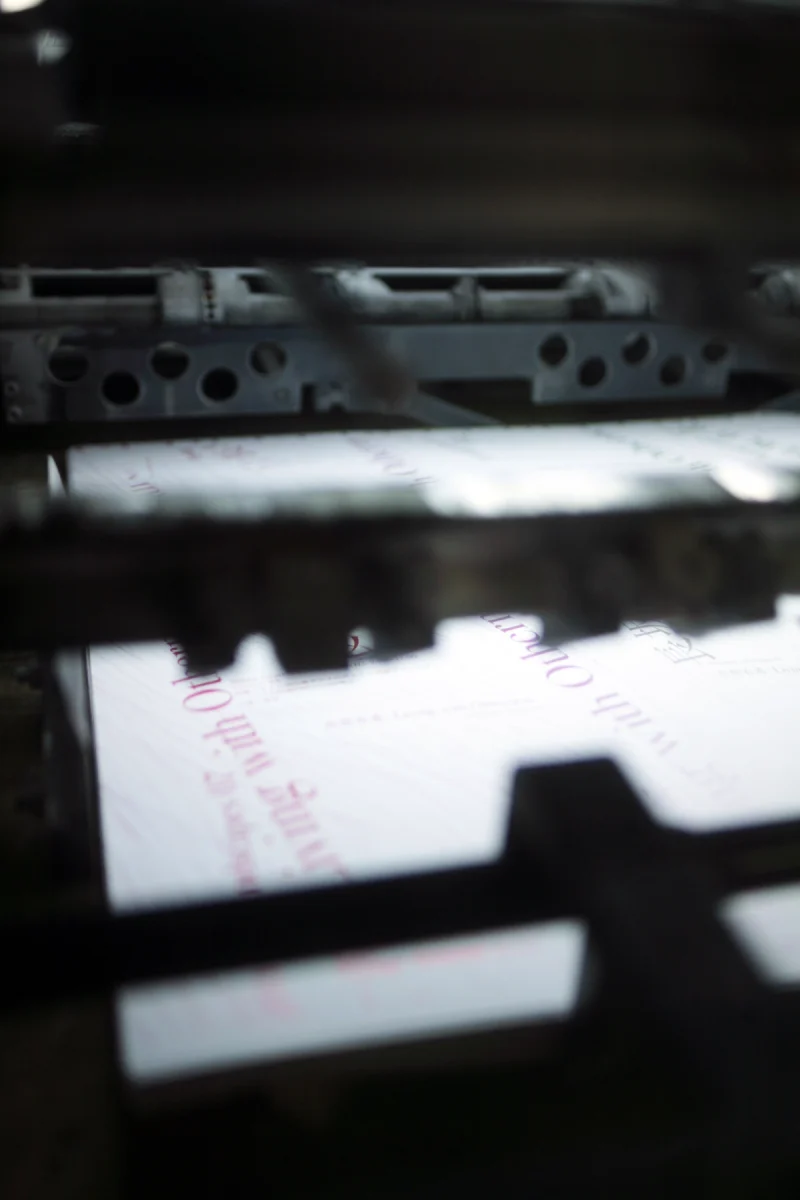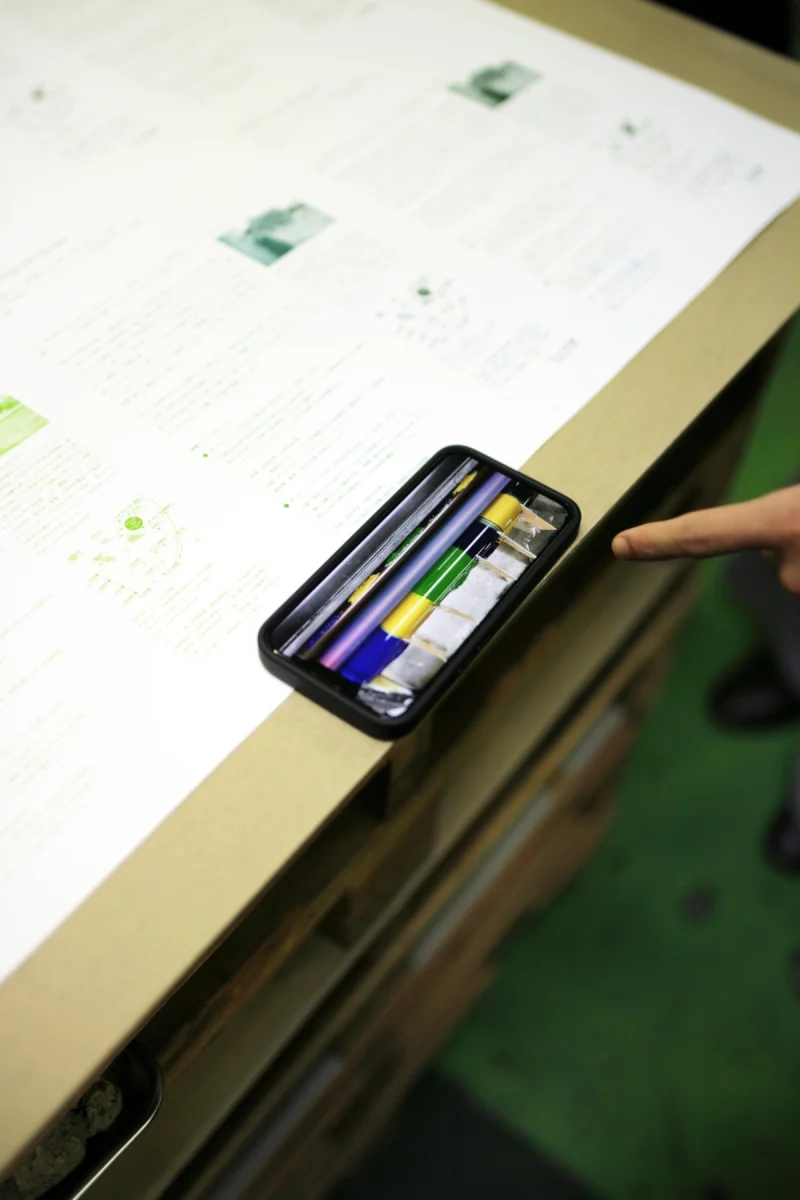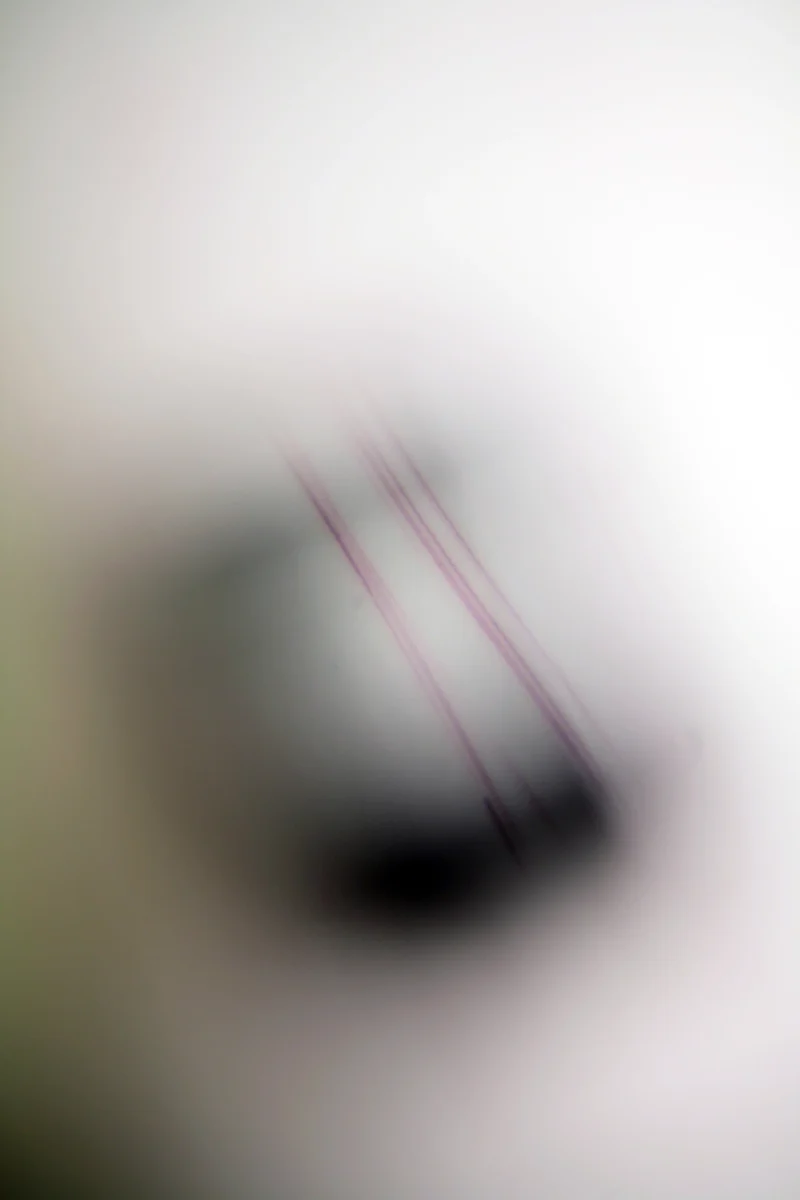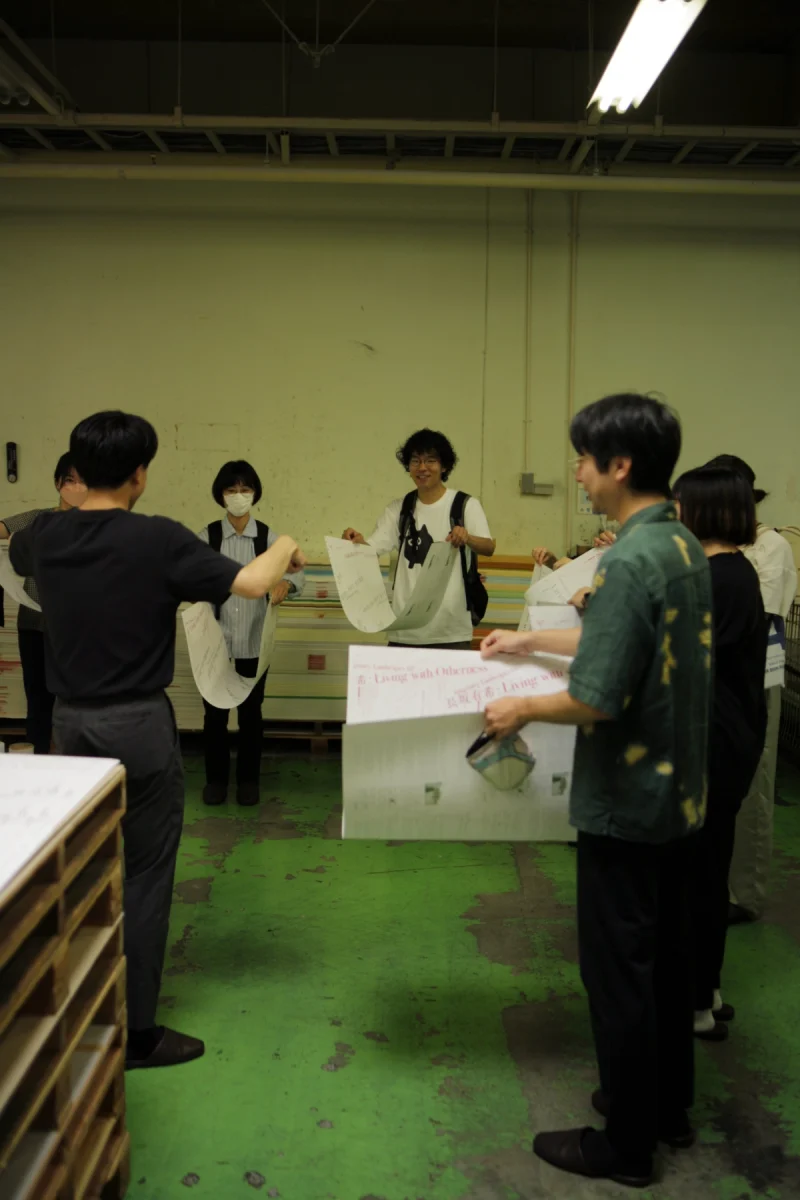Preface.
–
擦り製版:
オフセット元版であるアルミ版に火山礫を擦り付け、傷をつけ製版。
アーティストの長坂有希氏が北海道各地をフィールドワークし制作した作品の発表であることや、展覧会のテーマ「Living with Otherness」に応答し土地や作品を印刷機械に接近させることで双方の個性を立ち上げたいと思った。そこで、展示作品の一部である樽前山の火山礫をオフセット印刷機の製版工程へ忍ばせることにした。
一般的には今回のような図案を印刷する場合は、例えば火山礫に墨をつけ描画したものをスキャニングしデータ化、元版となるアルミ版にレーザーでデザインデータ(文字や画像)を焼き付けて微細な凹凸をつけることで製版が完了する。しかし、今回は印刷現場で送られてきた火山礫を元版に直接擦り付け、元版に傷をつけ、それを製版と呼ぶことにした。火山礫が物理的に直接、オフセット印刷機へ介入するとき火山礫の個性は定着するが、それと同時に一見、強固にみえるオフセット印刷機の個性も立ち上がるかもしれないという仮定をもって印刷実験をおこなった。
また、元版に直接描画したことで、解像度というデジタル的な枠組みから外れ、傷がどのような表情で印刷されるのかにも興味があった。
グラデーション印刷:
油性オフセット印刷、表5色・裏5色を使用した両面各1版のグラデーション印刷。使用インキは印刷会社に保管されていた残肉(残特色インキ)をベースに、女神インキの耐摩スーパーシルバー等を使用。
生態系、自然物と機械、採集と産業など様々なものの連続性や再現性を表現するためにグラデーション印刷を行なった。また、一見、印刷物全てが同じように見えてもよくよく見ると一部ずつ全て異なる色合いでグラデーションになっているところもいいところである。印刷しながら次回以降の新しいアイデアも思いついた。
印刷現場の公開
2024年7月2日、株式会社ソノベ仙台工場にて擦り製版から刷り出しまでの見学会を企画した。十数名が集まり、印刷所を見学。その後、火山礫を手渡し、作業工程に加わってもらった。
礫が元版に残っている可能性やどれくらい擦れば刷れるかわからないなか、とにかく印刷がはじまった。
–
Rubbing Plate-Making:
Volcanic gravel was rubbed directly onto the aluminum plate used as the offset master, scratching the surface to create the plate. The works were created by artist Yuki Nagasaka through fieldwork across Hokkaido, and in response to the exhibition theme Living with Otherness, I wanted to bring both the land and the works closer to the printing machine so that their individual characters could emerge. For this reason, volcanic gravel from Mt. Tarumae—also part of the exhibited works—was introduced into the offset plate-making process.
Ordinarily, to print a design like this, one might ink the volcanic gravel to make a drawing, scan it into data, and then burn the design (letters or images) into the aluminum plate with a laser, creating micro-relief on the surface. This time, however, I directly rubbed the volcanic gravel sent to the print site onto the plate, scratching it, and called that plate-making. When the volcanic gravel physically intervenes in the offset printing press, its unique character is fixed in place, but at the same time, I hypothesized that the seemingly rigid identity of the printing press itself might also become visible. This printing experiment was carried out under that assumption. I was also curious to see how the scratches, drawn directly onto the plate outside of digital “resolution,” would be expressed in print.
Gradient Printing:
Oil-based offset printing was used, with five colors on the front and five colors on the reverse, creating a gradient with a single plate for each side. The inks were based on leftover spot colors stored at the printing company, along with metallic inks such as Taima Super Silver from Megami Ink.
The gradient printing was used to express the continuity and reproducibility between ecosystems, natural materials and machines, gathering and industry. Although the prints appear uniform at first glance, on closer inspection each one has subtle differences in gradation and color tone, which is part of their appeal. While printing, I also came up with ideas for future experiments.
Public Printing Session:
On July 2, 2024, a demonstration was organized at the Sonobe Co., Sendai factory, showcasing the entire process from rubbing plate-making to the first prints. A dozen or so participants gathered, toured the site, and were given volcanic gravel to take part in the process. Not knowing whether gravel would remain on the plate or how much rubbing would be needed for printing to work, the process nevertheless began in earnest.
